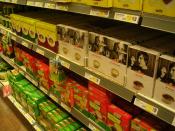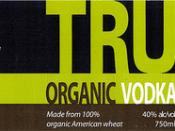Sales of private label cereal grew 50% from 1991-1994 in the Ready-to-Eat breakfast cereal industry. Some of the factors that contributed to the entry of private label cereal manufacturers and their subsequent growth include - lower costs related to manufacturing, packaging, marketing, R&D compared to the Big 3 cereal companies, product quality approaching that of branded products, higher margins for grocers, lower priced products. Some observers blamed higher prices and elaborate expenditure on coupon printing, distribution, redemption and reimbursement of grocer's handling fee for market share gains made by private label cereal products. The policy of "price up and spend back" seemed to hurt the Big 3 firms.
The RTE cereal industry was historically a highly concentrated industry (Herfindahl index of 2140.29). However, the industry's internal rivalry was low because the Big 3 cereal companies pursued a strategy that restrained competition by avoiding practices that promote short-term benefits - trade dealing, in-pack premiums and vitamin fortification.
The Big Three firms engaged in cooperative pricing and increased product prices in lockstep. They did not compete on price and invested heavily in R&D for new products while conducting extensive national advertising. The advertising decision could be partly influenced by a prisoner's dilemma situation and also deterred potential entrants from the RTE cereal industry.
Strategic Advantage of Private Label producers over new brand producers:
Private label producers found it easier to make a breakthrough in this market due to several factors briefly mentioned above. Private label cereal products were considerably lower priced than their branded counterparts due to significantly lower costs achieved in manufacturing (focusing on simpler cereal products, less expensive ingredients), packaging (clear plastic bags rather than cereal boxes). Product differentiation was carried out only in terms of competitive pricing with little need for advertising and promotion. Private label cereal products...


